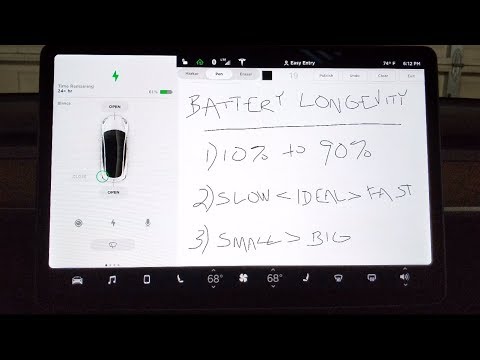The key takeaways from this guide are quite simple:-
1. lithium batteries are at their happiest when they are somewhere from 40% to 80% state of charge
2. lithium batteries prefer slow charging, so only fast charge when you have to
3. Don't charge to 100% and leave it at 100% for days on end
4. don't deplete your battery to <10% and leave it with out charging for days on end
This doesn't matter whether you are driving a Tesla, MG, Nissan etc it only matters if they are run with Lithium batteries.
the 2 most important points of the 4 are points 3&4 because those are the ones that will do the most damage to a lithium battery, the others will just speed up the inevitable degradation of the battery. particularly point 4, because if a lithium battery falls below the minimum voltage then it can not be recovered (i.e. bricked) 0% on the car is still a few percentage points above this threshold due to the buffer, so don' panic too much if you are at 0% just charge it ASAP
you can use the car as you want to and the batteries will still outlast the car, but to maintain the state of health (SOH) of the battery try and follow the best practice when you can.
Also, this is just a guide for best practice to prolong the life of the battery, reality of real world use is different. just like WLTP range is



